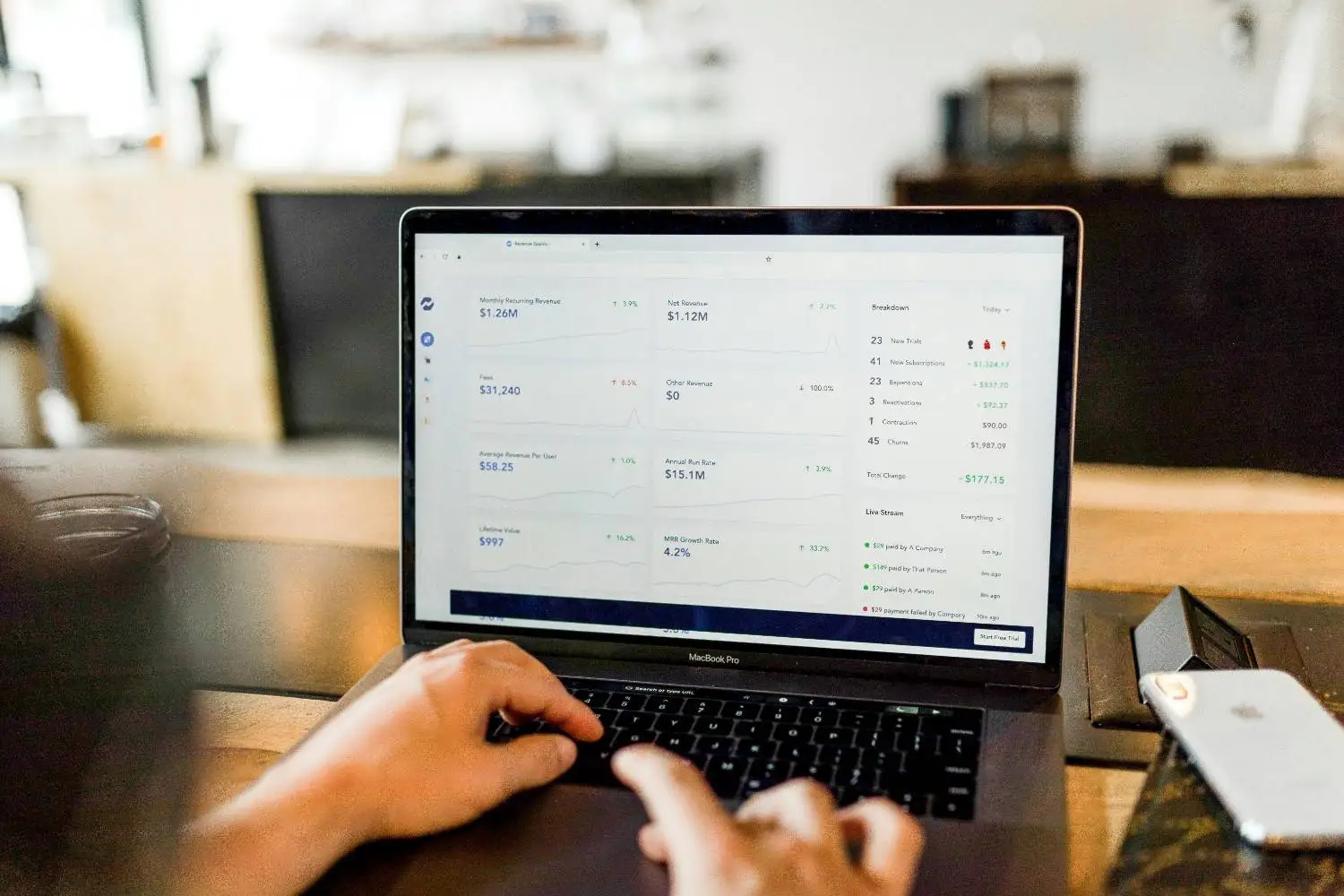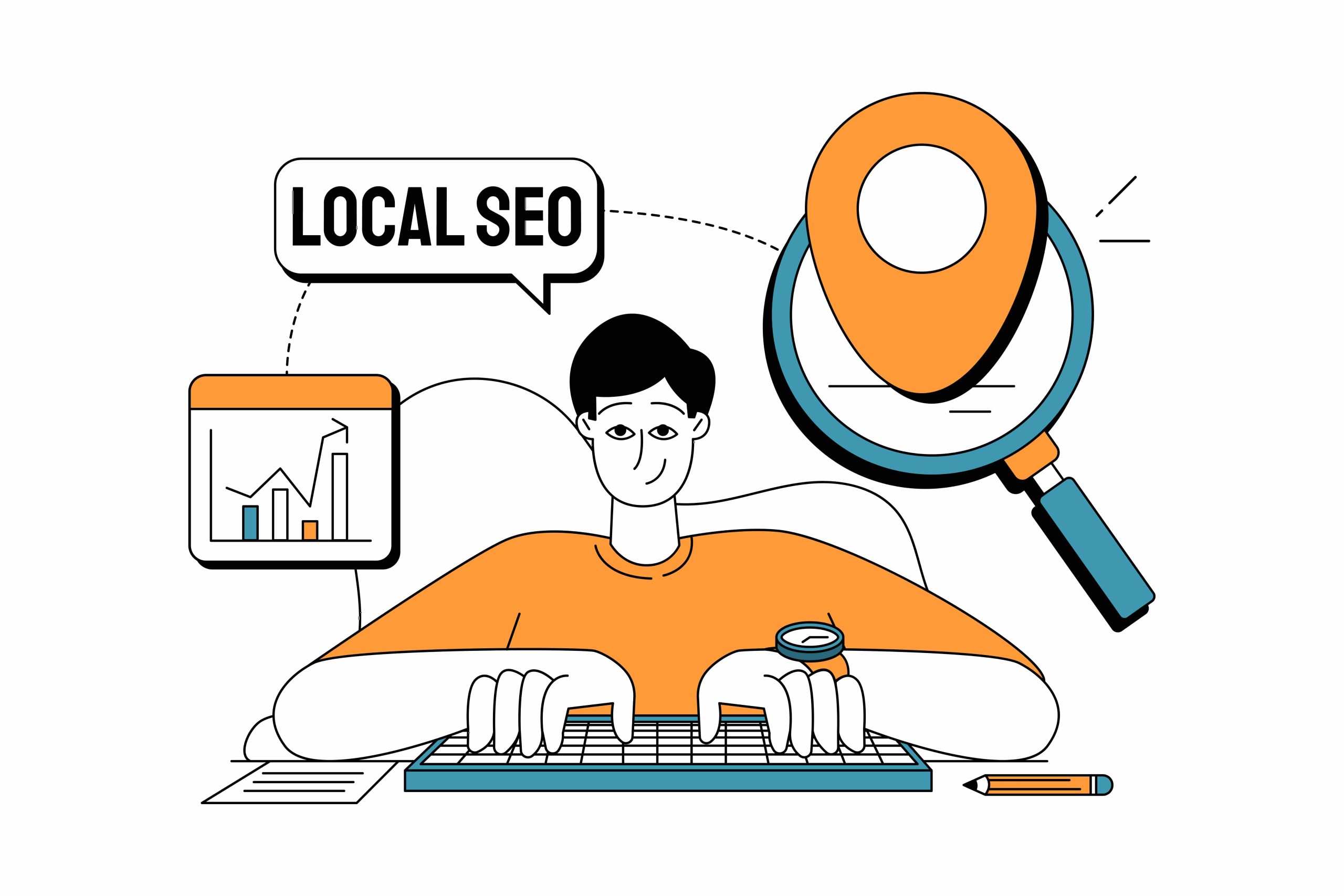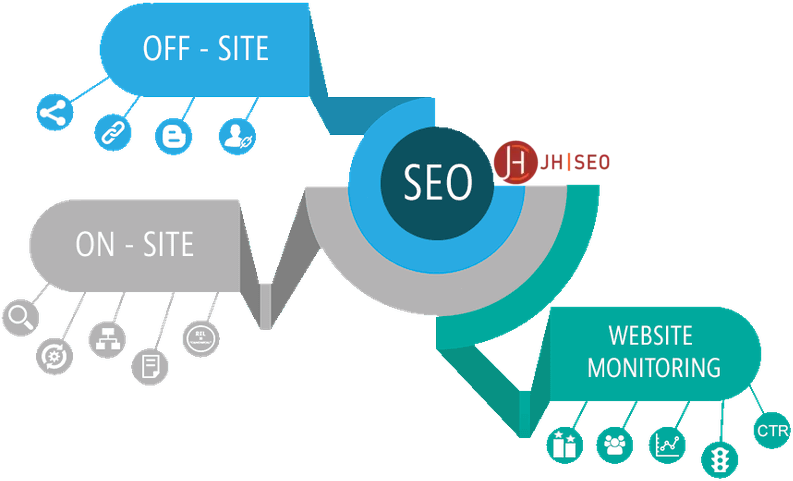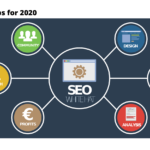Local SEO (Search Engine Optimization) is a digital marketing strategy that focuses on optimizing a business’s online presence to attract more customers from relevant local searches. Unlike traditional SEO, which aims to improve visibility on a national or global scale, Local SEO targets users searching for products and services within a specific geographic area. This is especially important for brick-and-mortar businesses like restaurants and retailers in San Francisco, where competition is high and consumers often rely on search engines to find nearby options. By optimizing for Local SEO, businesses can appear in Google’s Local Pack, Google Maps, and localized organic search results, making it easier for potential customers to find and engage with them.
For businesses operating in urban environments like San Francisco, location-based search optimization is critical. With a dense population, high foot traffic, and a large number of competing businesses, simply having a website is not enough to stand out. Potential customers frequently search for terms like “best coffee shop near me” or “boutique clothing store in San Francisco,” and businesses that are not optimized for these local queries risk losing out to competitors who are. Additionally, Google’s algorithms prioritize relevance and proximity, meaning that businesses that actively manage their Local SEO efforts are more likely to appear at the top of search results when users are looking for products or services in their area.
Investing in Local SEO offers numerous benefits for San Francisco businesses, particularly in increasing visibility, attracting foot traffic, and improving customer engagement. Optimized local listings, customer reviews, and location-based keywords help businesses build trust and credibility with potential customers. Moreover, Local SEO drives highly targeted traffic—people searching for local services already have an intent to visit or make a purchase, leading to higher conversion rates. By focusing on Local SEO, restaurants and retailers can establish a strong digital presence, connect with their community, and stay competitive in San Francisco’s dynamic marketplace.
How Local Search Rankings Impact Your Business’s Visibility
Local search rankings determine where a business appears in location-based search results, such as Google’s Local Pack, Google Maps, and organic search listings. Google’s local algorithm prioritizes businesses that are most relevant to a user’s query, factoring in location, business category, and online reputation. When a potential customer searches for a service—such as “best sushi restaurant in San Francisco” or “boutique clothing store near me”—Google’s algorithm ranks businesses based on how well they match the search intent and their overall online presence. Businesses that rank higher gain significantly more visibility, clicks, and foot traffic compared to those buried lower in the results.
Several key factors influence local search rankings, and optimizing them can help a business appear at the top:
- Google Business Profile (GBP) Optimization – Completing and regularly updating your Google Business Profile (formerly Google My Business) with accurate information, categories, and photos improves visibility.
- Citations and Consistent NAP (Name, Address, Phone) – Ensuring your business details are consistent across online directories like Yelp, TripAdvisor, and Yellow Pages boosts credibility and ranking.
- Customer Reviews and Ratings – Positive reviews and high ratings signal trustworthiness to both Google and potential customers, influencing rankings and conversions.
- Proximity to the Searcher – Google prioritizes businesses that are physically close to the user performing the search, making it essential to optimize for local keywords and locations.
For businesses in San Francisco, where competition is fierce, securing a high local search ranking is crucial for staying ahead. With countless restaurants, retailers, and service providers vying for attention, those who fail to rank on the first page of search results risk being overlooked by potential customers. The fast-paced nature of the city means consumers often make quick decisions based on the top search results, reinforcing the need for strong Local SEO. By prioritizing local search ranking factors, businesses can enhance their online presence, drive foot traffic, and ultimately increase revenue in one of the most competitive markets in the country.
How Local SEO Helps Attract More Local Customers
In recent years, the rise of “near me” searches has transformed how consumers find businesses. With the increasing use of mobile devices, people now rely on search engines to discover local restaurants, stores, and service providers in real time. Queries like “best pizza near me” or “clothing boutique in San Francisco” are among the most common local searches, and Google prioritizes businesses that are optimized for these types of queries. Studies show that 76% of people who search for something nearby on their smartphone visit a related business within a day, highlighting the power of Local SEO in attracting ready-to-buy customers. By optimizing for local search, businesses ensure they appear in front of the right audience at the right time.
One of the most effective ways to attract more local customers is by appearing in Google’s Local Pack—the top three business listings displayed prominently in local search results. The Local Pack provides users with quick access to essential business details such as name, address, phone number, reviews, and directions, making it a critical touchpoint for potential customers. Businesses that rank in the Local Pack benefit from:
- Higher Click-Through Rates (CTR) – The Local Pack receives significantly more clicks than standard search results.
- Increased Foot Traffic – Customers often choose businesses from the Local Pack because of its visibility and ease of access to information.
- Enhanced Credibility – Businesses featured in the Local Pack are perceived as more trustworthy and reputable.
Beyond online visibility, Local SEO directly influences in-store conversions, meaning more people walk through the door and make purchases. When customers find accurate business information, positive reviews, and engaging content online, they are more likely to visit in person. Local SEO efforts such as managing customer reviews, ensuring consistent business details across directories, and optimizing for relevant local keywords all contribute to higher conversion rates. For San Francisco businesses, where competition is intense and consumer choices are abundant, strong local SEO can be the difference between a thriving business and one that struggles to attract customers.
What Are the Key Components of Local SEO?
Local SEO consists of several crucial elements that help businesses improve their visibility in local search results. Optimizing these components ensures that potential customers can easily find and engage with a business, whether they are searching on Google, Google Maps, or other local directories. By focusing on key ranking factors such as Google Business Profile (GBP) optimization, NAP consistency, and reputation management, businesses can enhance their online presence and attract more local customers.
Google Business Profile Optimization: What You Need to Do
A well-optimized Google Business Profile (GBP) is one of the most important factors for local search success. Since GBP listings appear in Google’s Local Pack and Google Maps, businesses must ensure their profile is fully completed and regularly updated. Here’s what you need to do to optimize your GBP:
- Claim and Verify Your Profile – Ensure your business is verified to gain full control over your listing.
- Provide Accurate and Detailed Information – Include your business name, address, phone number (NAP), website, hours of operation, and business categories.
- Upload High-Quality Photos – Businesses with photos receive 42% more requests for directions and 35% more click-throughs to their website.
- Use Keywords in Your Business Description – Optimize your profile with relevant local keywords to improve visibility in search results.
- Enable Messaging and Q&A – Make it easy for potential customers to engage with your business directly through your profile.
The Importance of NAP (Name, Address, Phone) Consistency Across Listings
NAP consistency—ensuring that your Name, Address, and Phone Number are the same across all online directories—is essential for building trust with search engines and potential customers. Google uses this information to verify business legitimacy, and inconsistencies can negatively impact local search rankings.
- Update Business Information Regularly – Ensure your details are accurate on Google Business Profile, Yelp, Facebook, and other local directories.
- Avoid Variations in Business Name or Address – Use the same format across all platforms (e.g., “Street” vs. “St.”).
- Check for Duplicate Listings – Remove or merge duplicate business profiles to prevent confusion and ranking issues.
- Use Local Citations Effectively – Get listed on reputable local directories like TripAdvisor, Yellow Pages, and industry-specific sites to boost credibility.
Managing Local Reviews and Reputation for Better Rankings
Online reviews play a major role in Local SEO, as Google considers review quality, quantity, and recency when ranking businesses. Positive reviews not only improve rankings but also influence customer trust and decision-making. 87% of consumers read online reviews before visiting a local business.
Best practices for managing your business’s online reputation include:
- Encouraging Satisfied Customers to Leave Reviews – Politely ask customers to share their experiences on Google, Yelp, and other review platforms.
- Responding to Reviews Promptly – Acknowledge and thank customers for positive reviews, and address negative feedback professionally.
- Monitoring and Managing Reviews Regularly – Use tools like Google Alerts or reputation management software to track mentions and reviews.
- Showcasing Positive Reviews – Highlight great customer feedback on your website and social media to build trust.
By focusing on these key components, San Francisco businesses can strengthen their local search presence, improve customer engagement, and drive more traffic—both online and in-store.
Why Local Businesses in San Francisco Need a Targeted SEO Strategy
San Francisco is one of the most competitive business markets in the country, making it essential for local businesses to implement a targeted Local SEO strategy to stand out. With thousands of restaurants, retailers, and service providers vying for attention, a generic SEO approach won’t be enough. Instead, businesses must focus on hyper-local optimization, keyword targeting, and content marketing to increase visibility, attract local customers, and drive more foot traffic.
Unique Challenges of Operating in a High-Competition City
San Francisco’s dense population and thriving business landscape create unique challenges for local businesses trying to gain online visibility. Some of the key obstacles include:
- High Competition for Search Rankings – Popular search terms like “best coffee shop in San Francisco” or “top clothing boutiques near Union Square” are highly competitive, making it difficult for smaller businesses to rank without a strong Local SEO strategy.
- Frequent Business Turnover – The city’s fast-moving economy means that new businesses are constantly opening, and existing ones must work harder to maintain their search presence.
- Changing Consumer Behavior – Tourists, residents, and commuters all search for local businesses differently, requiring businesses to adapt their SEO strategy to target multiple audiences effectively.
- Tech-Savvy Consumers – San Francisco customers often rely on online reviews, maps, and mobile searches before making a purchase decision, making online reputation management and local visibility even more critical.
How Hyper-Local Keyword Targeting Drives Better Results
To compete in San Francisco’s saturated market, businesses must go beyond general keywords and focus on hyper-local keyword targeting. This means optimizing content for specific neighborhoods, landmarks, and search intent to reach the most relevant audience.
Best practices for hyper-local keyword targeting include:
- Using Neighborhood-Specific Keywords – Instead of broad terms like “San Francisco bakery”, target more specific phrases such as “artisan bakery in the Mission District” or “best sourdough bread near Fisherman’s Wharf.”
- Optimizing for “Near Me” Searches – Ensure your website, Google Business Profile, and online listings include location signals to rank for searches like “best vegan restaurant near me.”
- Including Local Landmarks in Content – Mentioning well-known spots like Golden Gate Park, Union Square, or the Embarcadero can help Google associate your business with those locations.
- Creating Location-Specific Service Pages – If your business operates in multiple neighborhoods, dedicated pages for each location can improve rankings and attract local customers.
The Role of Location-Based Content Marketing in Customer Engagement
Beyond keyword optimization, content marketing tailored to the local audience helps businesses connect with customers and improve search rankings. Engaging, location-specific content signals to Google that a business is relevant to the area while also building trust with potential customers.
Effective location-based content marketing strategies include:
- Writing Local Guides and Blog Posts – Create content like “Top 5 Coffee Shops in North Beach” or “A Shopper’s Guide to Union Square Boutiques” to attract search traffic and position your business as a local authority.
- Highlighting Community Involvement – Showcase participation in local events, charity drives, or sponsorships to strengthen brand presence and connect with the community.
- Featuring Customer Stories and Testimonials – Share reviews or success stories from local customers to build credibility and encourage new business.
- Leveraging Social Media for Local Engagement – Use Instagram, Facebook, and TikTok to engage with local followers, promote neighborhood events, and highlight special promotions.
By implementing a targeted Local SEO strategy with hyper-local keywords and location-based content, San Francisco businesses can rise above the competition, attract more local customers, and drive sustained growth in this dynamic market.
Investing in Local SEO is essential for San Francisco restaurants and retailers looking to improve visibility, attract more foot traffic, and increase in-store conversions. By optimizing Google Business Profiles, targeting hyper-local keywords, and managing online reviews, businesses can rank higher in local search results and connect with nearby customers. While some may attempt DIY strategies, working with a local SEO expert ensures a data-driven approach, better rankings, and long-term success. To improve their local search presence, businesses should claim and optimize their listings, maintain NAP consistency, generate customer reviews, create location-based content, and consider professional SEO support for maximum results.



































































































































































































































